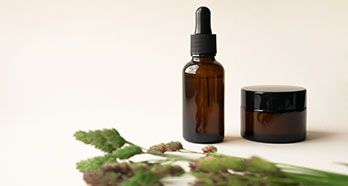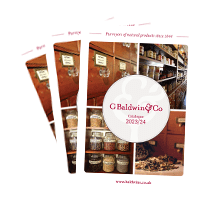UK Pollen & Hay Fever Calendar
What Is Pollen?
We all know that pollen is essential for fertilising crops and wildflowers. It’s an essential part of our ecosystem. However, when it comes to hay fever season, pollen can cause all sorts of problems for those with allergies.
Pollen, which looks like a fine yellow powder to us, is actually an accumulation of microspores in a seed plant. It is carried by insects such as bees, but also by wind and water.
UK Pollen Count Through The Seasons
If you suffer from allergies and experience reactions such as watering eyes, itchiness and sneezing when the pollen count is high, it’s worth knowing when to expect it. By doing so, you can arm yourself with effective hayfever remedies in preparation. It’s worth noting that pollen counts can vary depending on location and from year to year. However, being aware of when high pollen is likely is very useful for hay fever sufferers so they can get prepared. To make things easier to do so, we’ve broken down the expected month-by-month pollen count in our handy calendar below.
![]()
This information is all based on research by the University of Worcester.
Spring
March | April | May
Summer
June | July | August
Autumn
September | October | November
Winter
December | January | February
Spring
While most calendars start in January, it makes sense to begin a pollen calendar in spring, as that’s the first time when we can expect pollen to rise. Here’s a month-by-month guide on what to expect and how to manage your symptoms.
March
March marks the beginning of spring and with it the start of pollen season too. The following pollen types could make your symptoms flare up during this month.
Peak pollen:
- 1st-31st - Alder
- 1st-15th - Hazel
- 15th-31st - Willow
- Yew – most of the month
- Poplar – towards the end of the month
- Birch – at the very end of the month
You can also expect some general pollen release from Ash, Plane and Oil seed rape.
However, if your flare-ups are caused by weed or grass pollen you should remain symptom-free for now.
Manage your hay fever symptoms this March and shop our allergy relief range
April
With April comes warmer days and a tapestry of colour as spring blooms come into full force. Unfortunately, this brings with it a wealth of pollen that can make hay fever sufferers endure flare-ups throughout. In April you can expect:
Peak pollen:
- Alder –beginning of the month
- Poplar – beginning of the month
- 1st-15th - Elm
- 1st -15th - Willow
- Ash – most of the month
- Birch – throughout the month
- Plane – at the end of the month
- Oak – at the end of the month
You can also expect some general pollen release from Hazel, Yew, Pine, and Oil seed rape.
Manage your hay fever symptoms this April and shop our allergy relief range
May
May hails the end of spring and the start of the summer. Here, the pollen count remains high.
Peak pollen:
- 1st - 15th - Birch
- 1st - 15th Plane – first half of the month
- 15th - 31st - Pine
- Oil seed rape – most of the month
- Oak – throughout the month
You can also expect some general pollen release from Willow, Ash, Grass, Plantain, Nettle, and Dock.
Manage your hay fever symptoms this May and shop our allergy relief range
Summer
Summer brings with it (hopefully) long warm days, and us Brits love nothing more than getting our pasty whites out when the sun is shining. However, for those with allergies summer can bring with it troublesome times as while tree pollen lowers, pollen from weeds becomes a lot more prevalent. Let's take a look at the typical month-by-month pollen counts during summer.
June
In June, there are plenty of different types of pollen in the air.
Peak pollen:
- Oak – beginning of the month
- 1st - 15th - Pine
- Plantain – most of the month
- Grass – throughout the month
- Oil seed rape – throughout the month
- Lime – towards the end of the month
- Nettle – at the very end of the month
- Dock – at the very end of the month
You can also expect some general pollen release from Birch Mugwort.
Manage your hay fever symptoms this June and shop our allergy relief range
July
July is peak summer and a time to enjoy the great outdoors - provided you are not suffering from hay fever symptoms that is!
Peak pollen:
- Lime – beginning of the month
- Plantain – beginning of the month
- Dock – most of the month
- Grass – throughout the month
Nettle – throughout the month
- Mugwort – at the very end of the month
You can also expect some general pollen release from pine and oil seed rape
Manage your hay fever symptoms this July and shop our allergy relief range
August
Thankfully, by August, hay fever sufferers can expect some release, as only a few types of pollen remain in circulation.
Peak pollen:
- 1st - 15th - Nettle
- 1st - 15th - Mugwort
You can also expect some general pollen release from Grass pollen, Plantain, and Dock
Manage your hay fever symptoms this August and shop our allergy relief range
Autumn
Autumn is perhaps the prettiest season as the leaves turn gold and orange and the cooler weather sets in. Autumn is a favourite season amongst hay fever sufferers as pollen counts drop dramatically. There are, however, a few to still be wary of lingering in the air.
September
There are no peak pollen counts at this time of year. However, it’s still good to take note of the general release of pollen. At the start of the month, grass and mugwort linger, while nettle is the main culprit for September and will remain for the majority of the month.
Manage your hay fever symptoms this September and shop our allergy relief range
October, November & December
The end of autumn and cooler months bring great relief to hay fever sufferers. This is the time of year when pollen counts are typically at their lowest. You should be able to have some respite and enjoy the freedom of being able to go anywhere and everywhere without making sure you have some hay fever relief to hand.
Winter
Snow, icy winds, sleet and hail - surely pollen can’t be an issue during the winter months, right? Unfortunately, this is not always the case as pollen can be released at the start of the year causing hay fever sufferers to experience flare-ups even in the winter months.
January
Don’t let hay fever get in the way of a brand-new you this January! Be wary of those trees who like to release their pollen at the start of a new year.
You should be alert to the general release of pollen of Alder throughout the month, as well as Hazel and Yew in the latter half of January.
February
Some trees like to start pollinating early which can cause problems for those with allergies. Fortunately, this tends to occur during the latter half of the month, so you’ll have time to stock up on supplies.
Peak pollen:
- 15th- 28th - Alder – second half of the month
- 15th- 28th - Hazel – second half of the month
- 15th- 28th - Yew – second half of the month
You can also expect some general pollen release from Elm and Willow.
Keep Hayfever at Bay All Year Round with Symptom Relief Remedies from Baldwins
Don’t let hay fever stop you from getting out and about in peak pollen season. At Baldwins, our huge range of hayfever relief remedies will help you feel fighting fit, whatever the season. Shop our allergy relief products here.







 Looking for Qualified Advice on Herbs & Supplements?
Read our health guides, quick tips and popular posts on a range of health conditions, products & fitness
Looking for Qualified Advice on Herbs & Supplements?
Read our health guides, quick tips and popular posts on a range of health conditions, products & fitness
 At number 64, our Walworth Road Shops are featured in Time out London’s
100 best shops and we couldn’t be more delighted!
At number 64, our Walworth Road Shops are featured in Time out London’s
100 best shops and we couldn’t be more delighted!

 View our Catalogue online.
It is stocked full of our latest oils, beauty products, health foods & gifts.
View our Catalogue online.
It is stocked full of our latest oils, beauty products, health foods & gifts.